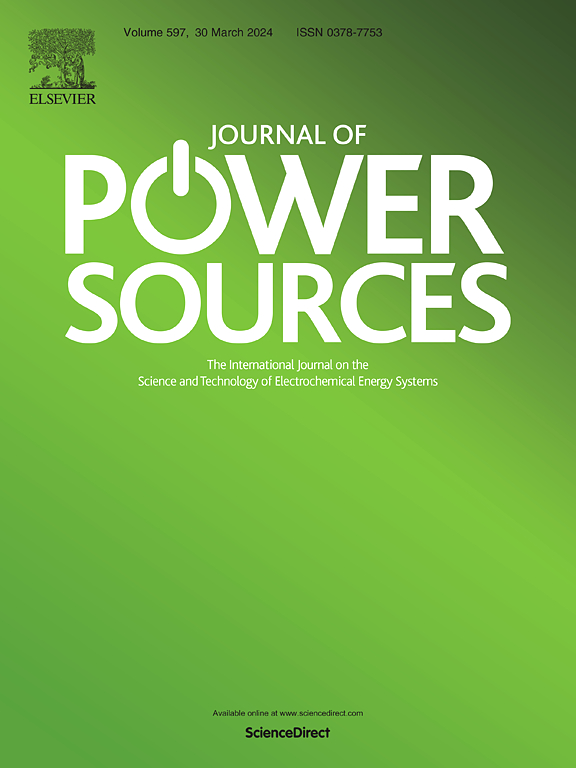质子交换膜燃料电池流场的机器学习辅助设计
IF 8.1
2区 工程技术
Q1 CHEMISTRY, PHYSICAL
引用次数: 0
摘要
优化流场是提高质子交换膜燃料电池性能的关键方法。以往关于流场设计的研究大多依赖于物理直觉,缺乏对流场复杂几何形状的系统探索。为了解决这些问题,我们首先使用深度优先搜索算法生成了一个包含 28348 个几何图形的综合流场库。随后,我们从该库中随机选取 480 个流场,并使用计算流体动力学表征其相应的燃料电池性能。这 480 个流场可作为机器学习训练的数据集。利用训练好的神经网络,我们可以快速预测燃料电池的性能,并识别出高性能流场。仿真结果表明,预测出的高性能流场能有效改善传质和电流密度分布,从而提高电流密度和最大功率密度。实验验证表明,与传统蛇形通道相比,我们的优化流场设计的最大功率密度提高了 10.37%。此外,我们的几何分析确定了高性能流场的关键特征,为未来的设计提供了指导。本文章由计算机程序翻译,如有差异,请以英文原文为准。
Machine learning-assisted design of flow fields for proton exchange membrane fuel cells
Optimizing the flow field is a key approach to enhancing the performance of proton exchange membrane fuel cells. Most previous research on flow field design relies on physical intuitions, lacking systematic exploration of the complex geometries of flow fields. To address these issues, we first generate a comprehensive flow field library containing 28,348 geometries using the Depth-First Search algorithm. Subsequently, we randomly select 480 flow fields from this library and characterize their corresponding fuel cell performance using computational fluid dynamics. These 480 flow fields serve as the dataset for machine learning training. Using the trained neural network, we rapidly predict fuel cell performance and identify high-performance flow fields. Simulation results demonstrate that the predicted high-performance flow fields effectively improve mass transfer and current density distribution, thereby enhancing current density and maximum power density. Experimental validation shows a 10.37 % increase in maximum power density for our optimized flow field design compared to traditional serpentine channels. Additionally, our geometric analysis identifies key features of high-performance flow fields, guiding future designs.
求助全文
通过发布文献求助,成功后即可免费获取论文全文。
去求助
来源期刊

Journal of Power Sources
工程技术-电化学
CiteScore
16.40
自引率
6.50%
发文量
1249
审稿时长
36 days
期刊介绍:
The Journal of Power Sources is a publication catering to researchers and technologists interested in various aspects of the science, technology, and applications of electrochemical power sources. It covers original research and reviews on primary and secondary batteries, fuel cells, supercapacitors, and photo-electrochemical cells.
Topics considered include the research, development and applications of nanomaterials and novel componentry for these devices. Examples of applications of these electrochemical power sources include:
• Portable electronics
• Electric and Hybrid Electric Vehicles
• Uninterruptible Power Supply (UPS) systems
• Storage of renewable energy
• Satellites and deep space probes
• Boats and ships, drones and aircrafts
• Wearable energy storage systems
 求助内容:
求助内容: 应助结果提醒方式:
应助结果提醒方式:


